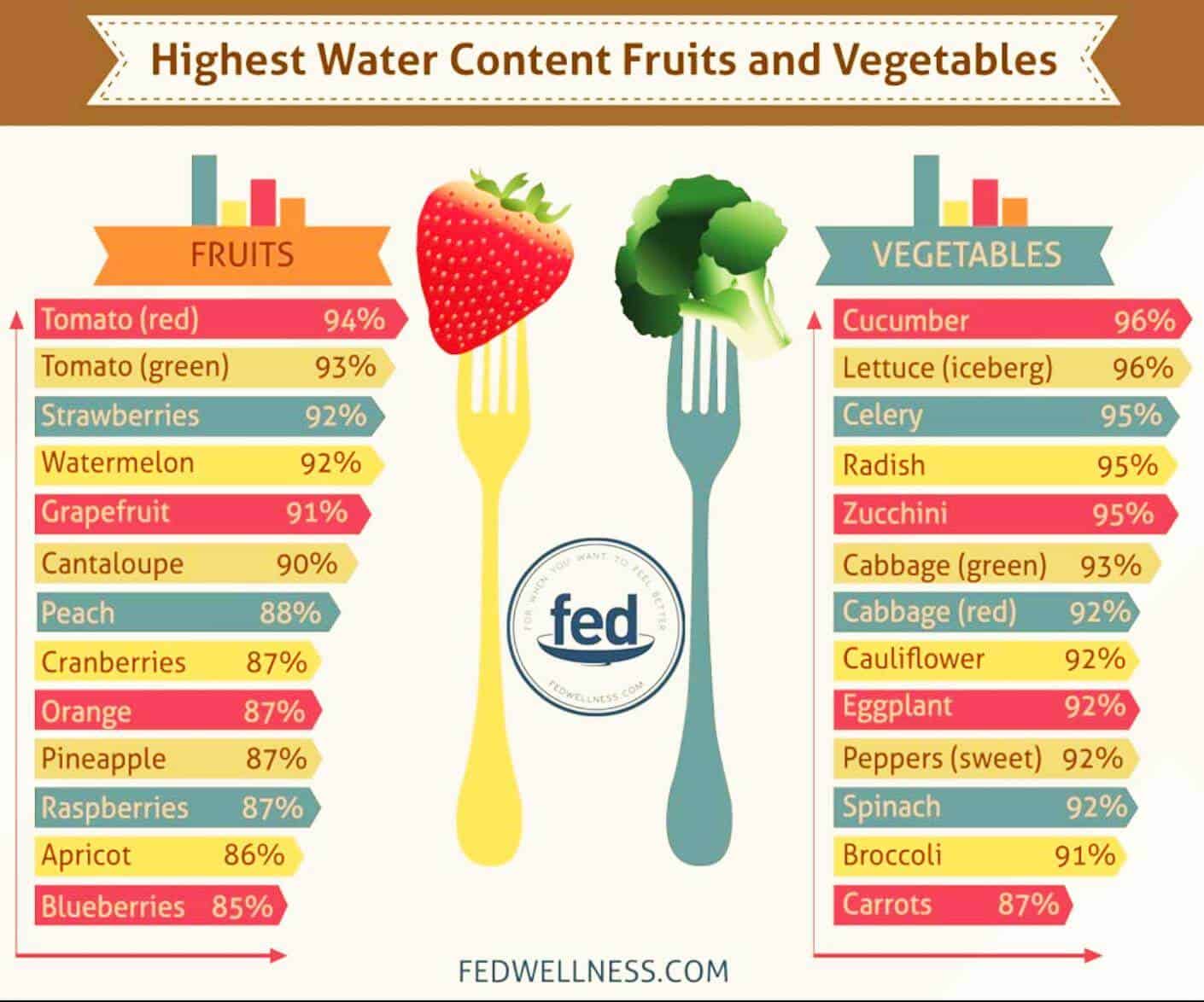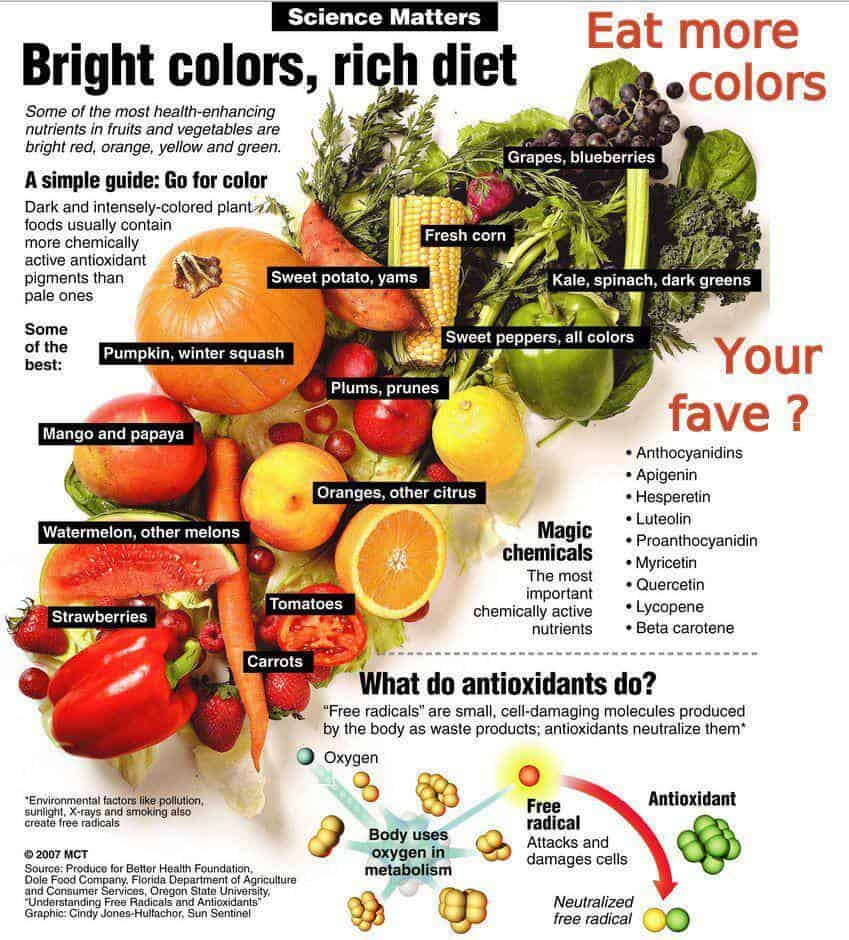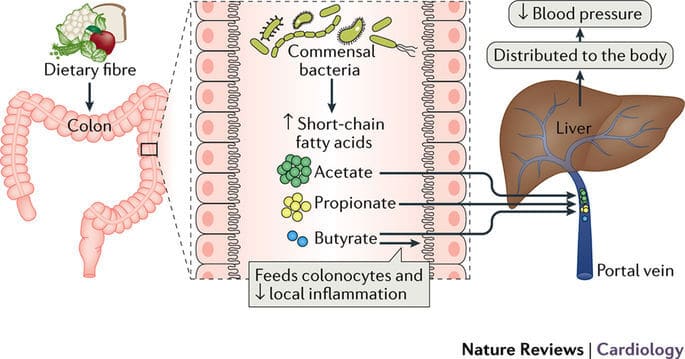
We’ve been talking a lot about the effect that minimizing fat intake has on boosting insulin sensitivity, and reducing your risk for heart disease, cancer, hypertension, high cholesterol, and diabetes.
In this article however, I’d like to introduce a different way of thinking about food – not as fuel, but as a complex collection of both macronutrients and micronutrients that act as biological instruction manuals.
While this concept may seem strange at first, micronutrients in particular play an extremely important role in human nutrition, and understanding how they direct nutrient absorption and utilization is absolutely vital in understanding the true power of plant-based nutrition.
Food as…Fuel?
Whole foods contain macronutrients in the form of carbohydrate, fat and protein. These macronutrients provide energy for cells in tissues all throughout your body. Think of carbohydrate, fat, and protein as fuel, and ATP (the cellular form of energy) as the end product.
In the same way that a car burns gasoline for energy, tissues all over your body oxidize carbohydrates, fat, and protein for energy. These macronutrients are what allow your heart to beat, your brain to think, and your muscles to contract, every second of every day.
Food as…Instructions?
Beyond the macronutrient fuel that whole foods provide, micronutrients play a very specialized and incredibly important role in directing the digestive orchestra.
Scientists used to think of micronutrients as simply a collection of essential vitamins and minerals, but over the past 20 years, our understanding of micronutrients has evolved substantially.
Researchers are now beginning to understand the complex and fascinating roles that micronutrients play in directing nutrient biochemistry.
Micronutrients account for the hundreds of players that affect how we digest, process, and use the nutrients we eat. And truth be told, micronutrients are the behind-the-scenes stars of the show.
In the same way that blueprints are the instruction manual for building a house, micronutrients act as instruction manuals that dictate how carbohydrate, fat and protein are digested, absorbed, transported, uptaken and oxidized for energy.
Micronutrients 101: Understanding WAV-FM
Perhaps you’ve never heard the new radio station WAV-FM. Playing all your favorite hits of the stomach, small intestine and large intestine.
This radio station is dedicated to optimal well-being, and speaks to all tissues in your body, including your brain, liver, heart, kidneys, pancreas and liver (to name a few).
Let’s take a look at the meaning behind each letter in this acronym to get a better understanding of the role of water, antioxidants, vitamins, fiber, and minerals.
Micronutrients 101: “W” Stands for Water
Most nutrition professionals call me crazy for labeling water as a nutrient. “False,” they say, “water is not a nutrient, it’s just water.”
Even though it’s true that water isn’t technically a nutrient, I like to treat water as a nutrient because its presence in food is absolutely required for optimal nutrient metabolism.
Water is a cofactor that assists in thousands of chemical reactions in your brain, heart, lungs, liver, muscles etc. These reactions happen on a second-by-second basis, and are responsible for keeping you alive.
Every second of every day, thousands of chemical reactions are taking place in your body simultaneously. And guess what helps facilitate these reactions? Water.
Water helps in many aspects of nutrient digestion and absorption, including (but not limited to) the following:
- In your stomach, water helps facilitate the digestion and unfolding of intact food material
- In your small intestine, water helps facilitate the continued digestion of partially digested food material, and plays a significant role in the absorption of glucose, fatty acids, and amino acids into your blood
- In your large intestine, water plays a vital role in bulking your stool, feeding your microbiome, and regulating your blood volume
Water is not only a nutrient, it is an essential nutrient required for optimal nutrient digestion, absorption, transport and oxidation.
Refined and processed foods in general are lower in their water content than whole foods, because higher water content reduces shelf life. That’s one of the reasons why packaged foods are kept in boxes, packages, and cans for long period of time – because minimal water content prolongs shelf life.
On the other hand, whole plant foods are high in water content, generally containing between 50-90% water. This means that when you eat plants, you actually eat water without even knowing it.
Take a look at this image to understand just how much water is contained in a wide selection of plant foods:

Take home message: Whenever possible, eat whole foods because they contain ample amounts of water, because this internal water supply aids your digestive system in digesting, absorbing, transporting, and oxidizing vital macronutrients all throughout your body.
Micronutrients 101: “A” Stands for Antioxidants
Free radicals are unstable molecules that are generated by breathing, eating, exercising, stressful situations, alcohol, and by your environment.
They are created when a molecule loses an electron, resulting in a highly unstable compound that bombards any neighboring molecule containing lots of electrons.
In this way, free radicals bombard DNA, cellular protein, and lipids, causing extensive cellular damage. The reality is that every second of every day, tissues all over your body generate free radicals.
- Free radicals are generated in your skin when exposed to the sun
- Free radicals are generated in your muscles when exposed to oxygen
- Free radicals are generated in your brain when you eat refined sugar
- Free radicals are generated in your liver when you drink alcohol
- Free radicals are generated in your muscles when you perform exercise
Even though free radicals are generated every second of every day just by living, tissues also possess the ability to repair free radical damage using antioxidants found in whole food.
Antioxidants are electron donors that circulate through your bloodstream, and hand out electrons to quench dangerous free radicals in search of electrons.
Think of antioxidants as the Mother Teresa of molecules, handing out electrons to free radicals in need of an electron (1–6).
- Antioxidants assist in the repair of mitochondria
- Antioxidants assist in the repair of cell membranes
- Antioxidants assist in the repair of damaged cell nuclear membranes
- Antioxidants assist in the repair of damaged DNA
- Antioxidants assist in the repair of mitochondrial DNA
- Antioxidants assist in the repair of the endoplasmic reticulum
- Antioxidants assist in the repair of the organelle membranes
The result of antioxidant activity is extended cell life. And if cells are able to live for a longer period of time in an undamaged or repaired state, then tissues are at a decreased risk for disease, de facto.
It turns out that plant foods contain on average 64 times more antioxidant content than animal foods.
Watch this humorous video from Dr. Greger at Nutrition Facts to get an idea of exactly how much more antioxidant content plant foods contain versus animal foods, to get an idea of their incredible free radical fighting power.
Antioxidants are easily recognizable as colors in food. You’ve been told to “eat the rainbow.” Why? Because colors are pigments, and pigments are antioxidants.
The more colors you eat, the more antioxidants you consume, the more front line soldiers are made available to perform complex cellular repair work.

Take home message: Whenever possible, eat whole foods because they are antioxidant-rich, the most powerful free radical defense mechanism in nature.
Micronutrients 101: “V” Stands for Vitamins
Vitamins are essential compounds in foods that partake in thousands of biochemical reactions in tissues all throughout your body. Biologists refer to vitamins as cofactors, because they assist in thousands of chemical reactions.
There are fat soluble vitamins and water soluble vitamins.
Fat soluble vitamins include vitamin A, vitamin D, vitamin E and vitamin K. They are found in foods with a higher fat content, including meat, fish, cheese, eggs, nuts, seeds and avocados (to name a few).
Water soluble vitamins include mainly vitamin B and vitamin C, and are found in foods with a higher carbohydrate content, such as fruits, vegetables, greens, beans, lentils and peas (7–10).
Vitamins are required for thousands of metabolic reactions, including (but not limited to):
- DNA synthesis and repair
- Protein synthesis and repair
- RNA synthesis and repair
- Glycogen synthesis
- Fatty acid synthesis
- Hormone synthesis
- Neurotransmitter synthesis
While animal foods do contain vitamins, their fat-rich environment is a perfect home for fat soluble vitamins. Plant foods harbor a carbohydrate-rich environment, which tends to be a perfect home for water soluble vitamins.
Take home message: Whenever possible, eat whole foods because they are vitamin-rich, and contain a significantly higher concentration of vitamins than do animal foods.
Micronutrients 101: “F” Stands for Fiber
Fiber is one of the most interesting nutrients that we eat, mainly because our understanding how fiber behaves in your digestive tract is evolving over time.
As a scientific community, we used to believe that fiber only swept cholesterol into the toilet, protecting you against heart disease, hypertension and certain types of cancer.
In today’s world, the scientific community is beginning to understand that fiber is actually a food – not for you, but for the microbiome housed in your large intestine.
Fiber is simply a long chain of glucose called cellulose. The problem is that humans don’t possess the enzyme cellulase that is capable of breaking the specific type of bond between each glucose molecule.
Bacteria in your large intestine produce copious amounts of cellulase, and because of that they derive energy from fiber and use it to produce short chain fatty acids (SCFAs) that promote immune function.

Reference: https://www.nature.com/articles/nrcardio.2017.120
Your microbiome houses more than 10 trillion bacteria, outnumbering human cells by about 9:1. Technically speaking, you are only 10% human and 90% bacterial (11).
Maintaining gut health is absolutely critical for maintaining total body metabolic health. A healthy microflora provides protection against infection. A dysregulated gut microflora has been linked with autism, depression, Hashimoto’s thyroiditis, inflammatory bowel disease and type 1 diabetes (12,11,13–17).
It is also important to understand that fiber supplements do not behave the same way as high-fiber foods. Studies have shown that the addition of fiber (from a product like Metamucil) to a poor diet does NOT protect against colon cancer, but that diets rich in high fiber foods do protect against colon cancer (18–21).
Let’s get out of the habit of thinking that a packaged supplement can mimic the effect of the complex food from which it was derived. Nutrients in isolation do not have the anti-disease power that they do in food.
Adding fiber powder to your diet may not increase stool bulking, and does not lower your cholesterol the same way that whole foods do.
Take home message: Whenever possible, eat fiber-rich whole foods because they provide fuel for your microbiome, bulk your stool, feed your immune system, and slow the rate of glucose absorption into your blood.
Micronutrients 101: “M” Stands for Minerals
In the same way that vitamins are cofactors that assist in thousands of metabolic reactions, minerals also act as cofactors to facilitate in:
- DNA synthesis and repair
- Protein synthesis and repair
- RNA synthesis and repair
- Glycogen synthesis
- Hormone synthesis
- Neurotransmitter synthesis
Minerals are valuable micronutrients that participate in thousands of chemical reactions in tissues all over your body, including (but not limited to) your brain, liver, pancreas, blood, muscle, heart, thyroid, small intestine, and large intestine.
Sodium and potassium help regulate water balance across cellular membranes, in order to protect cells against dehydration.
Iron helps in the synthesis of hemoglobin and myoglobin, which function to transport and store oxygen, respectively.
Calcium is required for optimal bone health, skin health, hair health, nail health, and fetal development (to name a few).
Take home message: Whenever possible, eat whole foods containing a wide variety of minerals that assist in chemical reactions in tissues all throughout your body.
Take Home Messages
Micronutrients play an extremely specialized role in directing your digestive orchestra, and are the behind-the-scenes stars that direct thousands of biochemical reactions in your body.
Whole foods from the plant world contain an incredibly high nutrient density, created by the presence of a wide variety of WAV-FM molecules.
The next time you reach for food to eat, be sure to give credit to the hard working micronutrients helping to promote optimal tissue function all throughout your body.
Lower Your A1c and Get to Your Ideal Body Weight ... Guaranteed

Your results are guaranteed. Join more than 10,000 ecstatic members today
Personalized coaching puts you in immediate control of your diabetes health, helps you gain energy, improves your quality of life, and reduces or eliminates your meds.
References
Leave a Comment Below!
Did you learn anything new? Have any questions about micronutrients? Let us know.

